

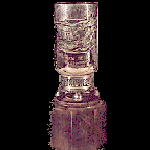 |
Honor
Goblet: A special award given from the Hauptmann himself, , this is to be ceremoniously given to each pilot that scores his first kill THIS AWARD WILL BE AWARDED TO A PILOT THAT SCORES HIS FIRST KILL IN BATTLE, FOR THE GLORY OF JASTA 37. |
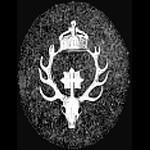 |
Jager Kampf Battalion
Badge (2nd class): The JKB badge 2nd class was awarded to a pilot for a successful battle (no losses to ones own flight) but inflicting complete losses to the enemy in a battle. THIS AWARD WILL BE AWARDED TO A PILOT THAT DESTROYS ALL ENEMY PLANES IN A BATTLE HIMSELF, WHILE NOT LOSING ANY OF HIS OWN FLIGHT IN THE PROCESS |
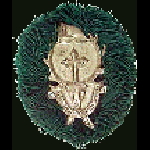 |
Jager Kampf Battalion
Badge (1st class): The JKB badge 1st class (the green one) was awarded to a pilot for continued successes in battle with no losses. but complete losses to the enemy. THIS AWARD WILL BE AWARDED TO A PILOT THAT REPEATS THE SAME FEAT THAT WON HIM THE JKB BADGE 2ND CLASS. |
 |
Letter of Commendation:
A letter of commendation shall be issued from HQ to pilots who perform duties above and beyond the call of duty, and for the Jagdgeschwader. A numeral overlaying the top of the document signifies how many letters of commendation a pilot has received. THIS AWARD WILL BE AWARDED TO A PILOTS THAT HAVE PERFORMED ACTS ABOVE THE CALL OF DUTY, AND FOR THE GREATER GOOD OF JASTA 37. |
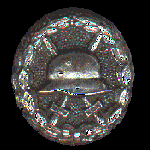 |
German Wound Badge:
Established: The Wound Badge was established on 3 March 1918 by Wilhelm II, Emperor of Germany and King of Prussia. Criteria: In recognition for wounds received in combat, German military personnel were awarded the Wound Badge in one of three classes. The Black Wound Badge was awarded for less than three wounds; the Silver Wound Badge was awarded for three or more wounds; and the Golden Wound Badge was awarded for severe wounds that permanently injured or disfigured the recipient. Julius Buckler may have been the only German ace to receive the Golden Wound Badge. THIS AWARD WILL BE AWARDED TO A PILOT THAT HAS BEEN WOUNDED IN BATTLE. |
 |
Prussian observers
badge: Established: Criteria: THIS AWARD WILL BE AWARDED TO A PILOT THAT HAS FLOWN A SUCCESSFULL RECON MISSION. |
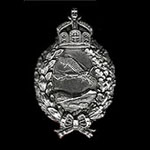 |
Pilots badge:
Established:1915 Criteria: The pilots of the German Air Service usually received the Pilot's Badge after gaining experience in aerial combat. THIS AWARD WILL BE AWARDED TO A PILOT THAT HAS FLOWN IN BATTLE. |
 |
Iron Cross 2nd class:
Established: 1813 Criteria: The Iron Cross was awarded in three Classes: The Grand Cross ("Grosskreuz") for senior commanders (only 5 awarded), 2nd Class for individual merit in combat (5 million), and the 1st Class for acts of heroism or bravery in combat (1 million). The Eisernes Kreuz all looked the same, it's where you wore them that told the difference: Grand Cross around the neck, 1st Class pinned to the left side of the tunic about 2 in. above the belt, and for the 2nd Class, you merely wore the ribbon looped through the second button hole in the front of the uniform. The Iron Cross has the distinction of being one of the few Prussian awards handed out to both officers and enlisted equally - probably because of it's long history as an award for valor. The EK2 usually came after a few successful missions (for 2-seater pilots) or the first few kills for a Kampflieger. THIS AWARD WILL BE AWARDED TO A PILOT THAT SCORES 3 KILLS. |
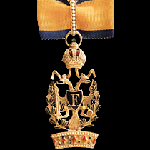 |
Order of the Iron Crown
(3rd Class): Established: Criteria: This was Austria’s fourth highest honor and was awarded to military officers for acts of conspicuous bravery. It is also one of the few awards that could be handed out to the same person for repeated acts of bravery. THIS AWARD WILL BE AWARDED TO A PILOT THAT DISPLAYS AN ACT OF BRAVERY AND/OR THE DESTRUCTION OF 5 ENEMY MACHINES IN COMBAT. |
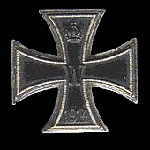 |
Iron Cross 1st class:
Established: The Iron Cross was originally established on 10 March 1813 by King Friedrich Wilhelm III. It was reestablished in 1870 during the Franco-Prussian war and again on 5 August 1914 by Wilhelm II, Emperor of Germany and King of Prussia. Criteria: Issued in three classes, the 1914 Iron Cross was awarded without regard for nationality or social class to combatants and noncombatants for acts of heroism, bravery or leadership. Although the medals of each class were identical, the manner in which each was worn differed. Employing a pin or screw posts on the back of the medal, the Iron Cross First Class was worn on the left side of the recipient's uniform. The Grand Cross and the Iron Cross Second Class were suspended from different ribbons. THIS AWARD WILL BE AWARDED TO A PILOT THAT SCORES 10 KILLS. |
 |
Crown Order 4th
Class (with Swords): Established: Criteria: This Prussian award was seldom given out at all in favor of the Knight’s Cross of the Hohenzollern House Order , as they both fell under the same criteria, and the latter was considered the more prestigious (being from the Kaiser’s own family order). As a matter of fact, only one German flier – Rudolf Windisch – ever received one. THIS AWARD WILL BE AWARDED TO A PILOT THAT SCORES 15 KILLS. |
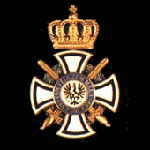 |
The Knight's Cross of
the Order of the House of Hohenzollern: Established: 23 August 1851, by Frederick William IV Criteria: The Knight's Cross of the Order of the House of Hohenzollern was a Prussian order only bestowed upon officers. For acts of bravery in combat, the decoration was adorned with crossed swords. It was most often awarded to recipients who had already received the Iron Cross, first class. THIS AWARD WILL BE AWARDED TO A PILOT THAT SCORES 18 KILLS. |
 |
Orden Pour le Mérite:
Established: Established in 1667 by Margrave Frederick (later to become King Frederick I), it was originally known as the Order of Generosity. Reorganized by Frederick II in 1740, it became the Order for Military and Civil Merit (pour le mérite). It was again reorganized in 1810 by Frederick William III and became the Order of Military Merit. In 1842, Frederick William IV added a civil class for scholars, painters, sculptors, and musicians. Following the armistice of 1918, it was never again awarded for military service. Criteria: During World War I, Prussia's highest military award, the Orden Pour le Mérite, was awarded for repeated and continual gallantry in action. It was never awarded posthumously. Recipients were required to wear the medal whenever they were in uniform. THIS AWARD WILL BE AWARDED TO A PILOT THAT SCORES 22 KILLS. |
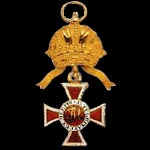 |
Order of Leopold:
Established: Criteria: An Austrian decoration, this appears to be a Commander’s Cross – The Knight’s Cross (technically the "kleinkreuz" – small cross – was minus the crown) was awarded to the most outstanding Austrian fliers. Consider it an Austrian Blue Max. THIS AWARD WILL BE AWARDED TO A PILOT THAT SCORES 25 KILLS. |
 |
Military Merit Cross (3rd
Class) with War Decoration: Established: Criteria: This Austrian award was roughly equivalent to the Prussian award of the same name, and was awarded for conspicuous acts of bravery – it also appears to have been awarded to many German fliers. It lies somewhere between the Knight’s Cross HOH and the Blue Max in stature. THIS AWARD WILL BE AWARDED TO A PILOT THAT DISPLAYS REPEATED ACTS OF BRAVERY IN COMBAT. |
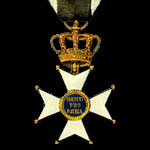 |
Bavarian Knight's Cross
of the Military Order of Max Josef: Established: 1 January 1806, by Maximilian-Joseph upon his ascent to the throne of the Kingdom of Bavaria Criteria: The Knight's Cross of the Military Order of Maximilian-Joseph was bestowed upon Bavarian soldiers for bravery in combat. A knighthood entitled the recipient to a lifelong pension and the right to append "Ritter von" to his surname. THIS AWARD WILL BE AWARDED TO A PILOT THAT CONTINUES TO DISPLAY REPEATED ACTS OF BRAVERY IN COMBAT. |
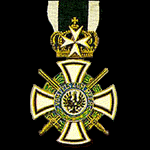 |
Knight’s Cross with
Swords of the Royal House Order of Hohenzollern with the insignia of the Order of St.
John: Established: Criteria: THIS AWARD WILL BE AWARDED TO A PILOT THAT SCORES 50 KILLS WITHIN ANY CURRENT CONFLICT THE SQUAD IS INVOLVED IN. |
 |
The Order of St. John
(Johanniter Ordern): Established: Criteria: THIS AWARD WILL BE AWARDED TO A PILOT THAT DISTINGUISHES HIMSELF THROUGHOUT THE COURSE OF THE WAR. |
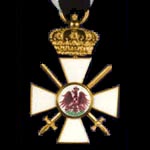 |
Order of the Red Eagle
(3rd Class) with Crown and Swords: Established: Criteria: An award given for over-all meritorious service to junior officers in Prussian service, it was seldom awarded in WW1. As you know, only one German flier ever received it: MvR – and that mostly because the AOK had run out of awards to give him! THIS AWARD WILL BE AWARDED TO A PILOT THAT KILLS 65 ENEMY MACHINES THROUGHOUT THE COURSE OF THE WAR. |
 |
The High Order of the
Black Eagle: Established: Criteria: Prussia’s highest order of knighthood and chivalry which conferred hereditary nobility on the recipient (and his posterity). Only royalty or the highest ranking officers ever received this exceptional order. THIS AWARD WILL BE AWARDED TO A PILOT THAT MATCHES MvR'S AMAZING RECORD OF 80 KILLS WITHIN THE COURSE OF THE WAR. |